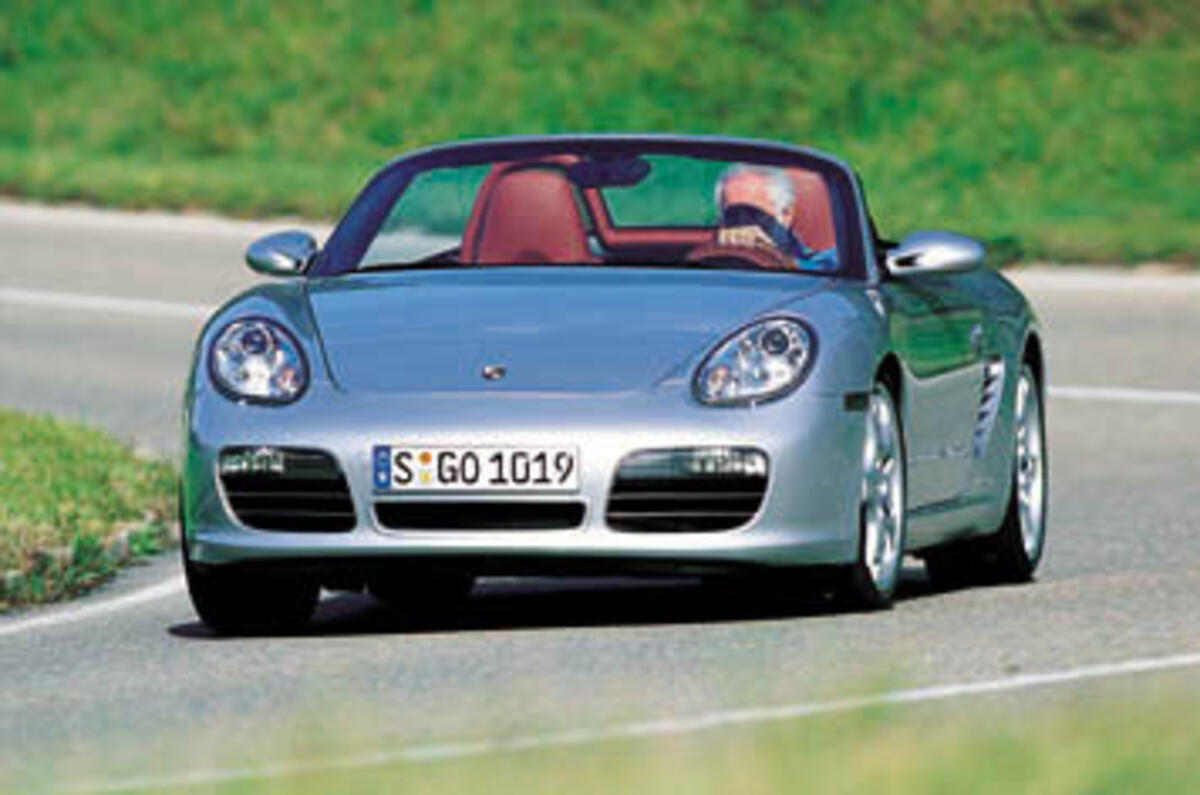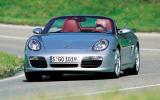It’s 8am before the Boxster S first plunges into my corner. The early morning mountain mist that threatened to spoil my fun and ruin our photo shoot has lifted. In the now-open cockpit, all my senses exposed to the rush of delights only sports car drivers understand, the Boxster is up for the challenge.
The new Porsche’s deeper flat-six induction yowl echoes across the valley, blending into the exhaust note, the rev counter needle surging above 6000rpm, until they’re an inseparable howl at the 7200rpm red line, just a couple of hundred revs shy of the cutout. Snick to second, conscious the quick-throw gearlever’s travel is now shorter, the change more precise, though in truth the S feels no more accelerative than the outgoing model. Reminder: must check the numbers.
The Boxster squats over the rear wheels, planted, secure, whipping into the sweeping right-hander. The new variable-rate steering filters out any surface irritations – no jiggling steering wheel here – but is also vaguer around the straight ahead. As on the new 911, there is a perception of needing more initial lock on turn-in, then an ever-quickening sense of added precision and accuracy.
White knuckles, heart rate on the increase, time for a confidence lift. Pointless – there is so much grip, the gentle change in attitude is transparent, poise undisturbed, even over the small post-apex lateral ridge that’s upset the balance of many rival cars through this same favourite corner. Right foot nailed, lock wound on, understeer sustained, mechanical grip overwhelming power, the Boxster hunkers down and belts out of the corner in third gear. Hmm, do the (optional) 19-inch Michelin Pilot Sport tyres, developed specifically for the Porsche, actually offer too much adhesion?
Try again, and again, each run carrying more speed into, through and out of the corner and nothing, not even hard braking, truly upsets the chassis’ equilibrium. Yes, you can fine-tune the line via the throttle. Ultimately, though we are certainly travelling faster, I’m left wondering if Boxster Mk2 is quite as enjoyable, as involving, as inspiring as the old car. At least on the 235/35 front and 265/35 rear ZR19 rubber that, through sheer competence, introduces a shade too much understeer. This car, I suspect, is going to be an even better drive on the smaller, standard, 18s. Is the Boxster now too good? Doesn’t stop me pronouncing to photographer Papior that, ‘This is still the sports car in the class.’
From 986 to 987, from first- to second-generation Boxster, this is evolution Porsche-style. Eight years and 140,000 mid-engined roadsters later, here’s a new Boxster that, at first glance, looks little changed over the old, though every exterior panel and even the windscreen is different. Our day together gradually snuffs out the perception that old and new are virtually indistinguishable. It may take a few viewings, but I reckon you’ll go through the same process before reaching the point where the two cars are instantly recognisable.
Porsche’s betting is that its philosophy of evolutionary familiarity will transform the Boxster into a second timeless classic, like the 911. Clearly the new Boxster’s nose borrows heavily from the Carrera GT supercar’s, but there is also a definite hint of Toyota’s mid-engined MR2. Ironic this, for the MR2 was Toyota’s take on the Boxster look. Now you could accuse the Germans of reverse-copying the Japanese.







































Add your comment